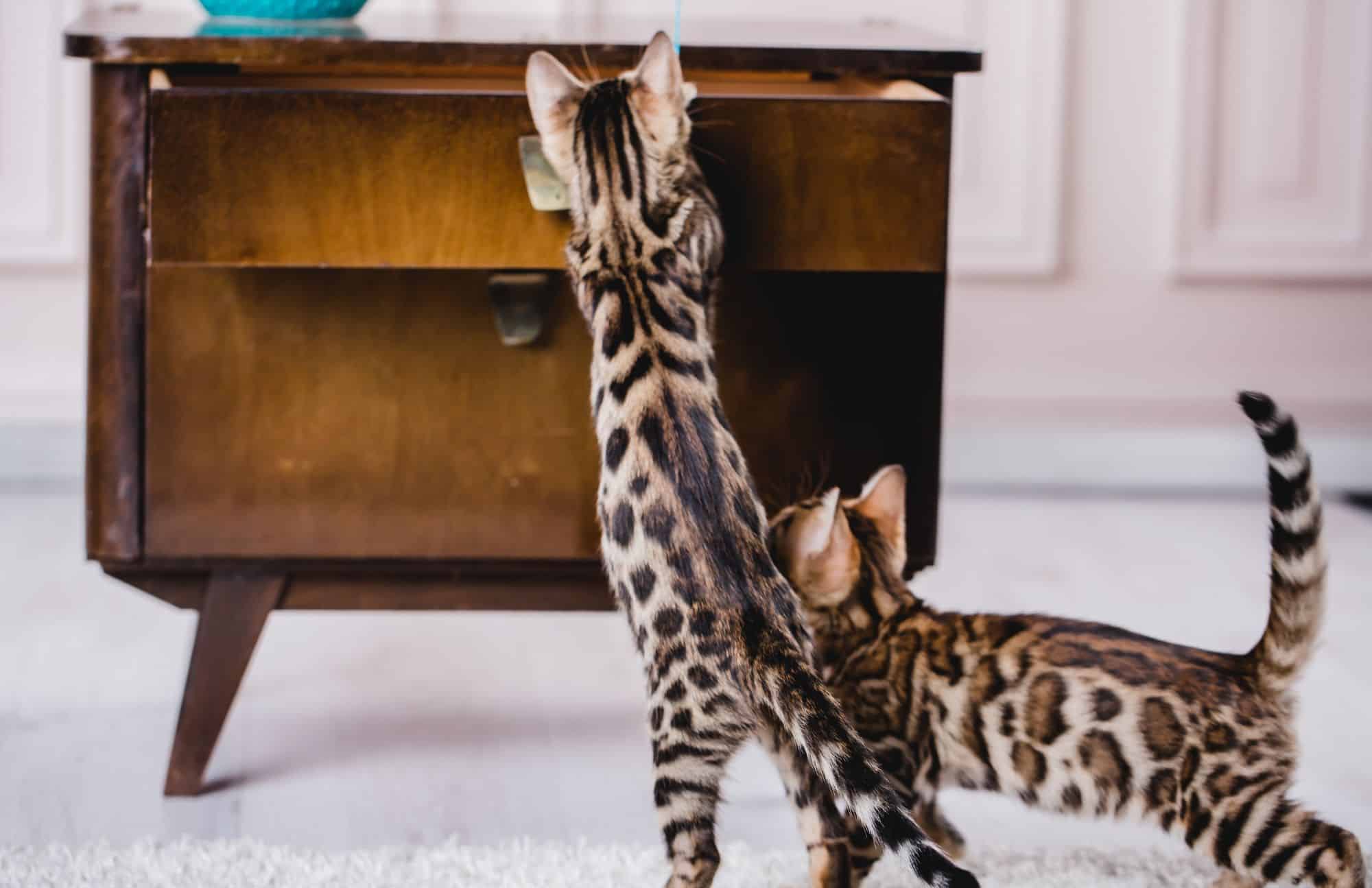Domestic cats have a variety of fur coat patterns ranging from a solid color to swirls, patches, or spots. The rosette pattern is one of the rarest domestic cat fur patterns. Read on to learn more about this interesting fur coat pattern that is a standard for only one domestic cat breed.
What are rosettes?
Rosettes are complex, multi-colored markings, often associated with wild cats like leopards and ocelots. In domestic cats, these patterns manifest as clusters of dark-colored spots, which encircle a lighter, often golden hue. Rosette is named after the rose-like fur pattern of these spots.
Rosettes are a form of camouflage
The appearance of rosettes in wild cats is a form of camouflage designed to allow the predator to hide and catch prey in their environment. Researchers from the University of St Andrews explain that the fur pattern of rosettes is a form of disruptive colouration. Disruptive coloration helps predators hide from their prey in different situations: when they are still, moving slowly (like when they are stalking), or moving fast (during a chase). The strong contrasts and irregular shapes of the rosette fur pattern help to make it hard for prey to accurately judge the speed and direction of the hunting cat. Prey will interpret the cat to be moving more slowly towards them than the cat actually is, increasing the odds of the cat being successful in their hunting.
Researchers from the University of Fribourg also point out that the presence of rosettes on a cats fur also help by tricking prey by mimicking the changing patterns of shadows. This trickery helps the cat to stay hidden from sight.
Example of rosettes in wild cats
Wild cats that have rosette patterns in their fur include the jaguar (Panthera onca), leopard (Panthera pardus pardus), snow leopard (Panthera uncia), ocelot (Leopardus pardalis), and the leopard cat (Prionailurus bengalensis).
For example, Snow leopards, (Panthera unica) have coats that are primarily white with irregular dark grey rosettes and spots. This distinctive coat features sharply contrasting patches of color, effectively disrupting the animal’s body outline, allowing the snow leopard to blend into their mountainous habitats.

Development of rosettes
Cats are not born with fully developed rosettes. Newborn cubs have black spots. As the cat matures, the spots develop into rings and then finally rosettes. It’s only on the head of the cat that the black dots remain into adulthood.

Rosettes in domestic cats
Bengal cat
The Bengal cat is the only domestic cat with rosettes. In 1963, the first documented cross breeding of an Asian leopard cat (Prionailurus bengalensis) with a male black mixed breed domestic by California breeder Jean Mill. This wild cat species naturally possesses a rosette-patterned coat, which is a key trait passed down to the Bengal breed.

According to the NY Times, the impetus for Mill’s crossbreeding was to create an alternative for the capturing of the Asian leopard cat of a household pet. Exotic pet ownership and overhunting for the wild cat’s pelt were drastically reducing populations. Mill worked with the genetics departments of several universities to perfect an outcrossing of the Asian leopard cat that could reproduce. Mill diverted interest in capturing wild cats for pets by creating an exotic wild-looking pet that had the personality and disposition of a domestic cat.

Savannah cat
Another outcrossing domestic cat breed, the Savannah cat is known to have nonstandard rosettes. This breed emerged in the mid-1980s from the crossbreeding of a female Siamese cat with the African serval, a wild cat known for its large, distinctive ears and spotted coat. The Savannah cat is the tallest domestic cat breed.
The standard coat of a Savannah cat are black or dark down “tear-streaked” markings along the body. This spotted pattern is the only pattern allowed by TICA breed standard for show cats.

References
Pembury Smith, M. Q., & Ruxton, G. D. (2020). Camouflage in predators. Biological Reviews, 95(5), 1325-1340. https://doi.org/10.1111/brv.12612
Dougoud, M., Mazza, C., Schwaller, B., & Pecze, L. (2017). The phenomenon of growing surface interference explains the rosette pattern of jaguar. arXiv preprint arXiv:1711.05574.
Gershony, L. C., Penedo, M. C. T., Davis, B. W., Murphy, W. J., Helps, C. R., & Lyons, L. A. (2014). Who’s behind that mask and cape? The Asian leopard cat’s Agouti (ASIP) allele likely affects coat colour phenotype in the Bengal cat breed. Animal genetics, 45(6), 893-897.







